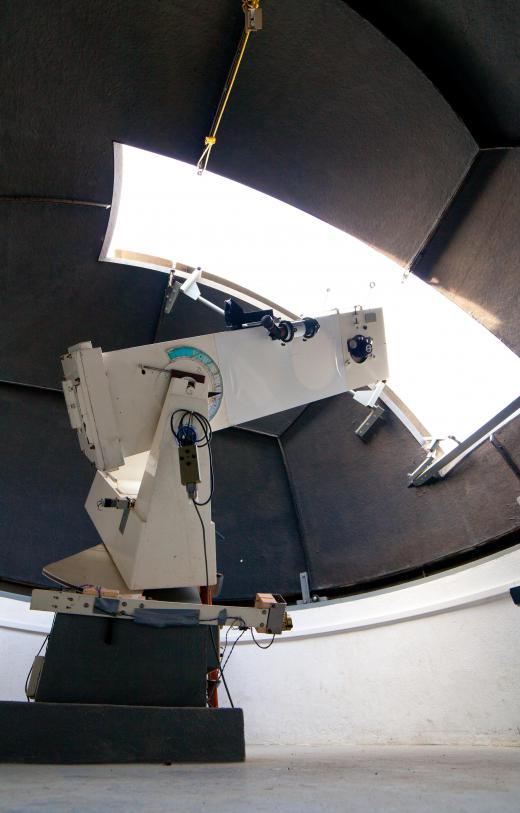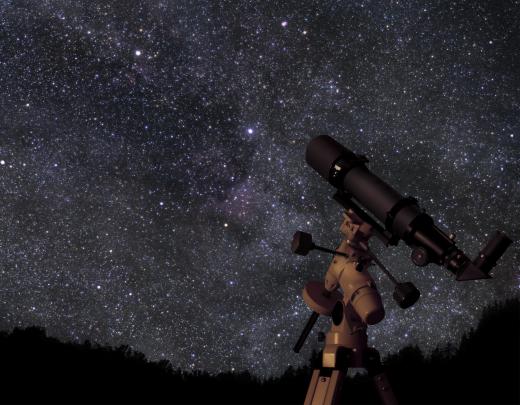The word telescope literally means “to see far, and telescopes are very large stationary or small handheld instruments for viewing objects at a distance. Telescoping is a mechanical function that derives its name from the handheld version of the telescope. It refers to the property of being built with elements that slide into each other, similar to the way a handheld telescope collapses.
Besides telescopes, there are a number of devices that employ telescoping for a variety of purposes. Telescoping, and therefore reducing the size of the device, can make an instrument like the telescope handier to carry when it is not being used. It can also be used to protect long extensions from strong winds, which might damage or topple them. The ability to telescope a device could also allow it to pass through height-restricted areas without requiring disassembly or risking damage, and it also allows use at different heights.

One use of telescoping is in metal and fiberglass flagpoles, as well as other extension poles. For flagpoles, the need for using rope to raise a flag is obviated, as it can be raised and lowered by collapsing or extending the sliding sections. For permanent extension, sections can be pinned in place or locked to avoid slippage. It is possible to use such poles at less than full height, if desired, but guying is recommended.

A telescoping ladder provides several of the conveniences of being able to telescope. First, it can be carried more easily in circumscribed areas, such as through doorways. Second, it is easy to use at different heights, without the top of the ladder extending beyond the height needed, which can interfere with the task to be done on the ladder. A telescoping mast that can be raised by electric power or a hand winch can be used for a WiFi hotspot, RF (radio frequency) transmission or retransmission, or surveillance.
One of the most common uses of telescoping is for antennas. Telescoping antennas are commonly a built-in feature of vehicles. Portable CB radios often feature a detachable rubber duck antenna — the type of antenna that is supplied with the radio — so that a telescoping antenna can be added for better reception and transmission in the field.
A use of telescoping that is less familiar to many is in the body of the Rag Dung — also Rag-Dung, Radhung, or Rag Dung Chen — a Tibetan temple horn that is said to sound like an elephant trumpeting. The Rag Dung comes in various sizes, ranging from a little over 3 ft to 20 ft in length (about 1 to 6 m), and even the shorter ones feature sections that can be extended and locked, or slid within each other for portability.

